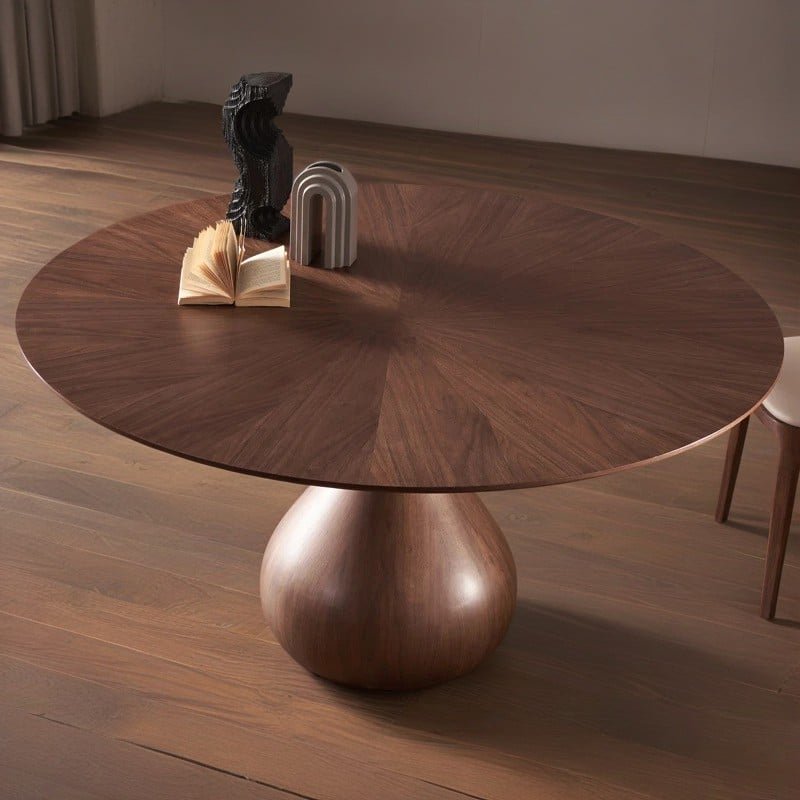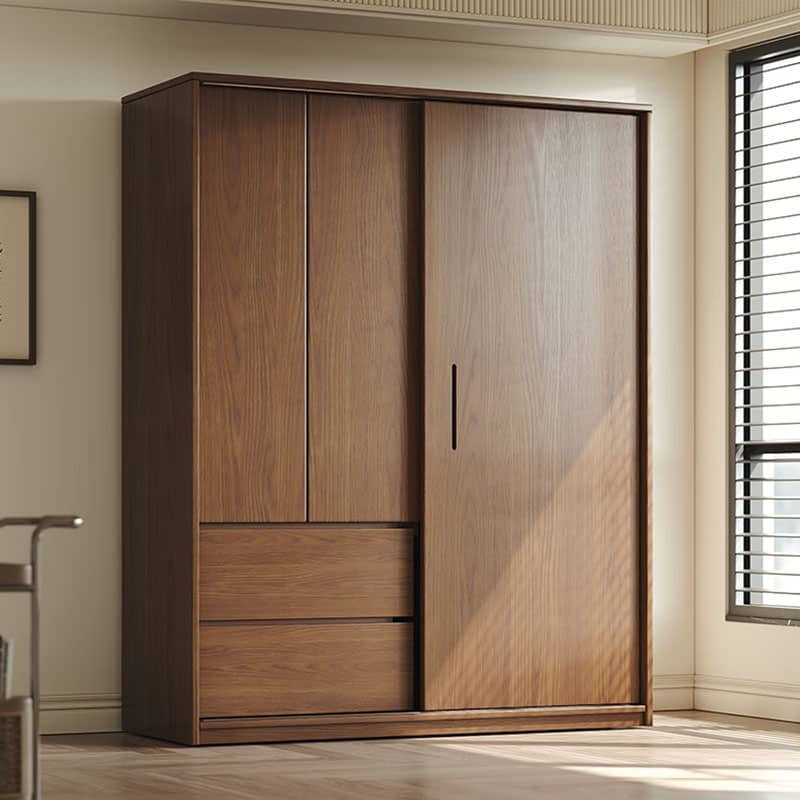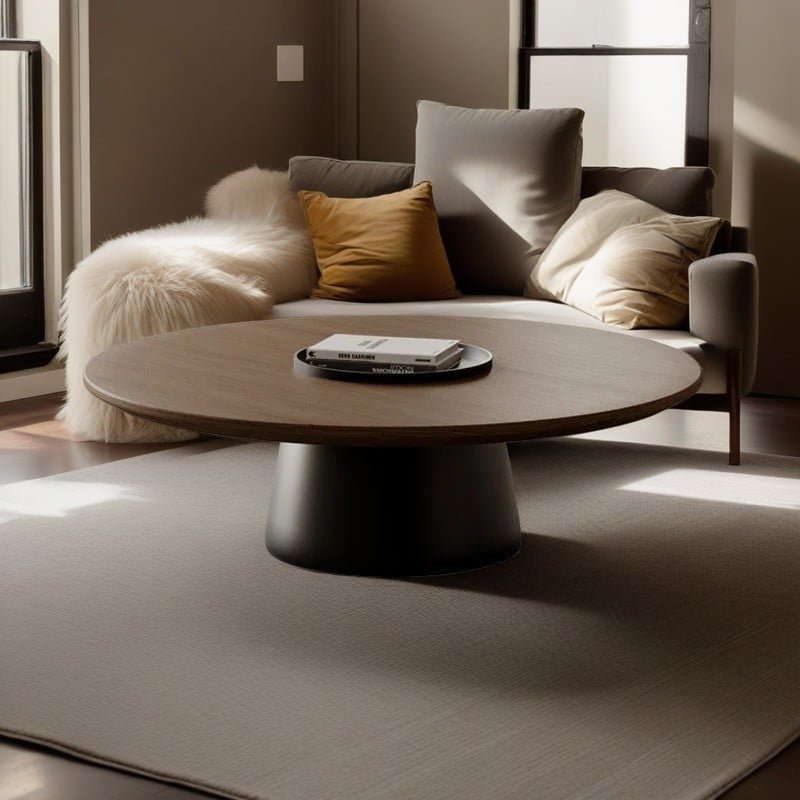- Health and environmental protection: the essential advantages of natural materials
Wooden furniture (especially solid wood) is processed by physical processes (cutting, mortise and tenon), avoiding the use of chemical adhesives, and the surface is treated with natural wood wax oil to achieve nearly zero formaldehyde release.
In the production of plastic furniture, plasticizers and flame retardants, releasing formaldehyde and benzene substances for a long time, which can easily cause harmful substances to accumulate and exceed the standard in a confined space.
The natural humidity regulating properties of wood can also maintain indoor humidity balance (40%-60% comfort zone), reduce respiratory tract irritation, and the plastic surface is prone to condense water vapor to breed mold, aggravate the deterioration of air quality.
- Durability and life cycle: the fundamental difference in time value
Solid wood furniture can have a service life of more than 30 years thanks to its natural fiber structure and scientific treatment (such as kiln drying and carbonization).
The traditional mortise and tenon process makes the structure more stable as it is used, and surface damage can be repaired by grinding.
Carbonized wood technology has increased the stability of wood by 75%, significantly enhanced anti-corrosion and insect resistance, and extended its service life by about 50 years.
In contrast, plastic furniture, limited by polymer aging characteristics, will yellow, stress deformation in 3-5 years, and will be brittle and softened at low temperatures, and will be almost impossible to repair effectively after rupture, and eventually become waste.
- Ecological and economic sustainability: an inevitable choice for long-termism
Environmental contribution: Wood comes from renewable forests, and about 1 ton of CO₂ is stored per cubic meter; plastics rely on non-renewable petroleum resources, and 1 kg of plastic is produced to release 3.5 kg of CO₂.
Waste treatment: Solid wood can be biodegradable or energy-based; plastic recycling rate is less than 9%, and most of them have become a source of pollution that has been difficult to resolve for a century.
Economy: Although wooden furniture has a high initial cost, its ultra-long life makes the average annual cost of use lower than that of frequently replaced plastic furniture. High-quality hardwood furniture also has the potential to preserve value, while plastic furniture has zero residual value after scrapping.

- Aesthetics and Functional Value: Spiritual Satisfaction beyond Practicality
The natural texture and warm touch of solid wood give the space an unreplicable natural aesthetic, forming a unique patina over time and carrying emotional memory.
Its thermal stability is better than plastics (plastics tend to deform when heated), and can be customized with ergonomic curve design.
Although plastic furniture has rich colors, it has cheap texture and is degraded and faded at high temperature/ultraviolet rays, making it difficult to integrate into high-end design styles.

5 Economics: Long-term Value Analysis
In the decision to purchase furniture, the initial price is often the decisive factor. However, from the analysis of full life cycle cost, the economic advantages of solid wood furniture gradually emerge with its service life, and its long-term value far exceeds that of plastic furniture with a single-time low-priced but short-lived life.
5.1 Full life cycle costing
The initial price advantage of plastic furniture is indeed obvious: a plastic chair may only be 1/5 or even lower than that of a solid wood chair. This low price comes from large-scale petrochemical production, cheap raw materials and automated injection molding. However, behind this “low price” is the real long-term cost: an average service life of a piece of plastic furniture is only 3-5 years, and then it will need to be replaced due to aging, brittleness or damage. Calculated in a 30-year cycle, consumers may need to purchase 6-10 batches of plastic furniture, with the cumulative cost far exceeding the one-time investment in high-quality solid wood furniture.
The initial investment of solid wood furniture is relatively high, but its long service life makes the average annual cost much lower than that of plastic furniture. Take a high-quality oak dining table as an example: the purchase cost is about 5,000 yuan, and it is still intact after 30 years of use, with an average annual cost of about 167 yuan; while a plastic dining table combination priced at 800 yuan may need to be replaced in 5 years, and 6 sets need to be replaced in 30 years, with a total cost of 4,800 yuan, and an average annual cost of 160 yuan – basically the same as solid wood, but cannot enjoy the beauty, comfort and health value of solid wood.
5.2 Implicit Value and Investment Return
Solid wood furniture has the potential to preserve value or even appreciate, which is an economic characteristic that plastic furniture cannot achieve. High-quality hardwood furniture may increase over time its material value (especially precious wood) and craftsmanship value. The antique furniture market confirms this: carefully crafted solid wood furniture has increased value over time. Plastic furniture basically becomes zero-value waste after its service life ends.
The healthy value of solid wood furniture can also be converted into economic benefits. Reducing the exposure of harmful substances such as formaldehyde and benzene means reducing medical expenses for respiratory diseases, allergic reactions and even major diseases. Especially for families with children, the elderly or sensitive groups, this hidden health benefit is difficult to measure with money.
5.3 Maintenance economy and sustainable consumption
The repairability of solid wood furniture significantly extends its economic life. Local scratches can be repaired by grinding, loose structures can be reinforcing, and damaged parts can be replaced separately. This “repairable design” significantly reduces the cost of long-term use. Many professional woodworking workshops provide lifelong maintenance services to ensure the furniture is passed down from generation to generation.
Repair of plastic furniture is almost impossible. Plastic welding effect is poor, adhesive strength is insufficient, and the repair cost is often close to the new purchase price. Once structural damage occurs, it can only be replaced as a whole, which not only increases consumer spending, but also increases environmental burden.
Today, with the rise of the concept of sustainable consumption, long-term value orientation is reshaping consumption decisions. Purchasing a piece of solid wood furniture that can be used for decades is more in line with the philosophy of sustainable life than replacing plastic furniture repeatedly. This change in consumption concept has made more consumers willing to pay a reasonable premium for high-quality solid wood furniture and enjoy the comprehensive value return throughout their life cycle.
Warm home


